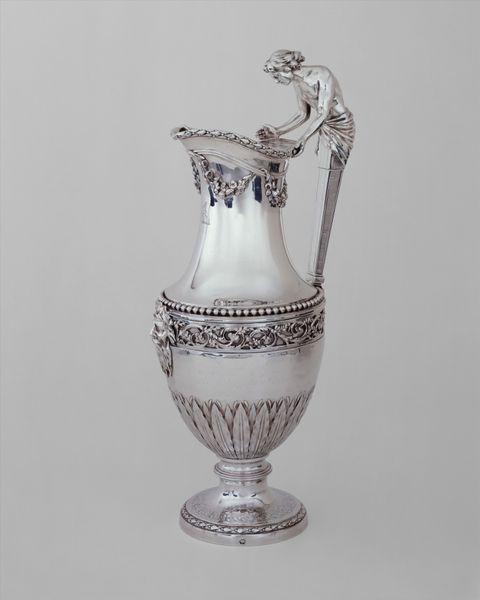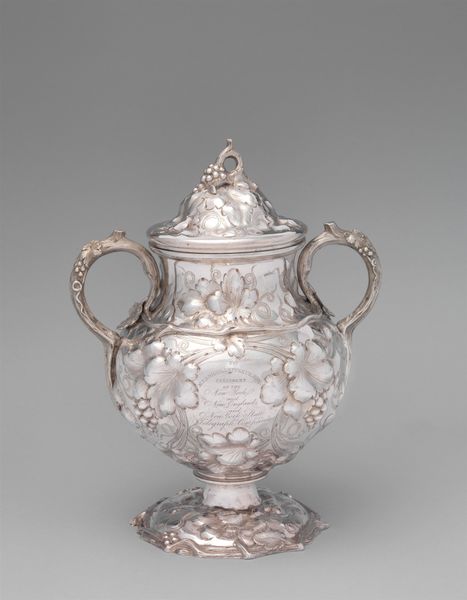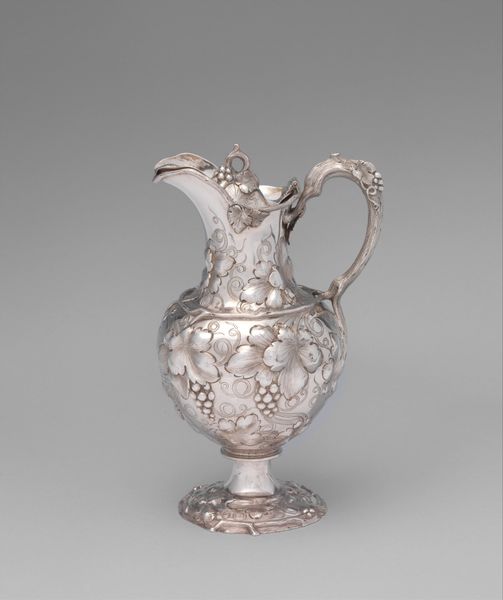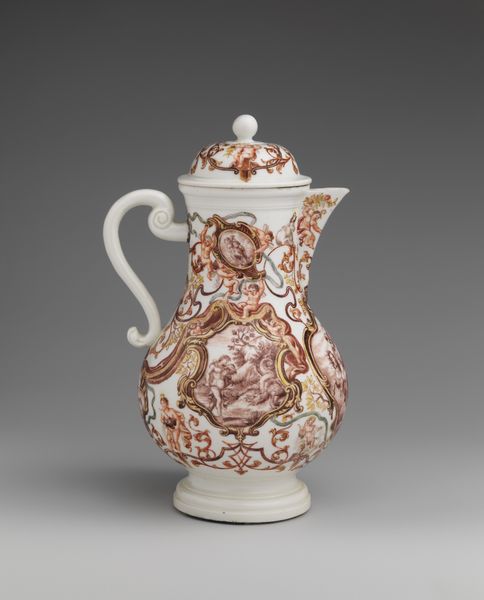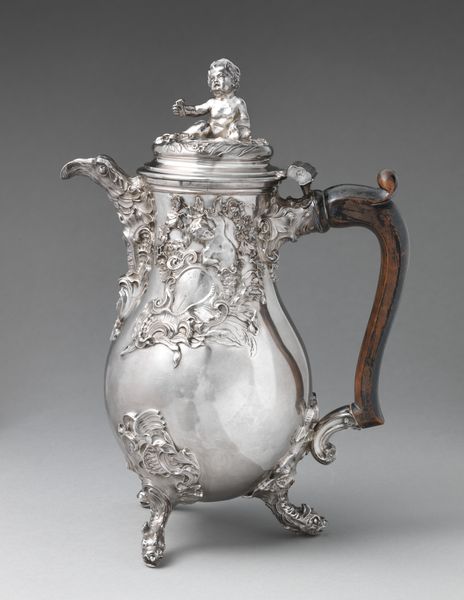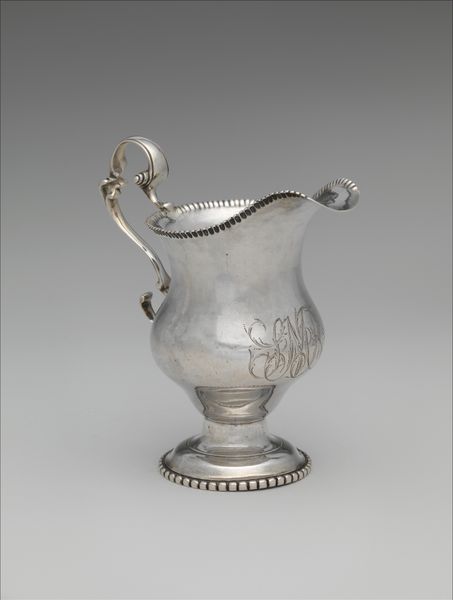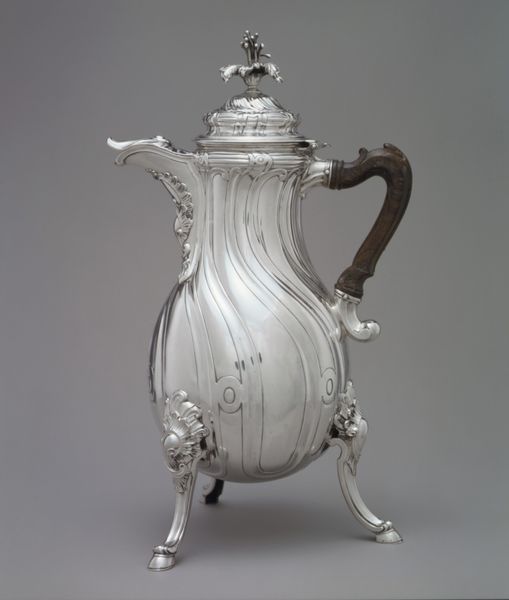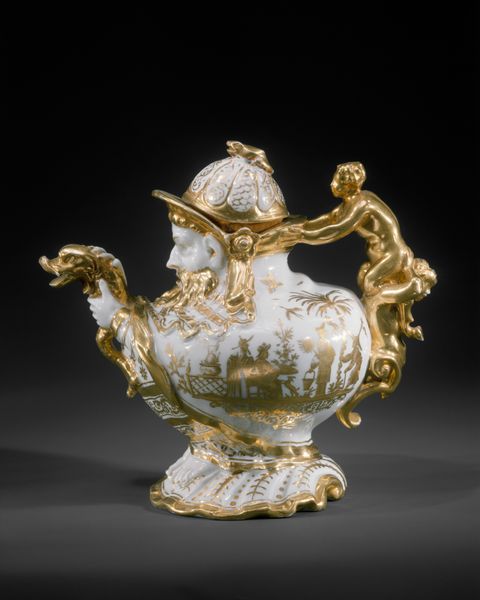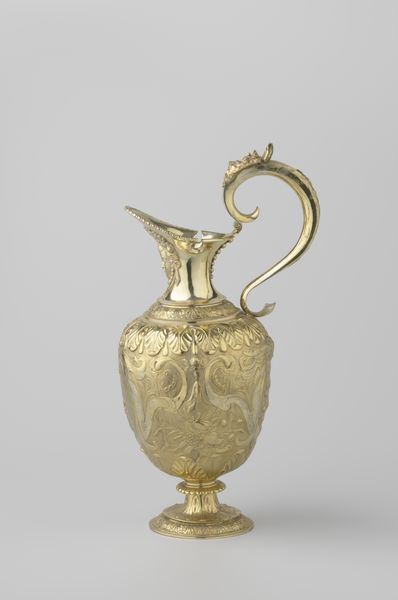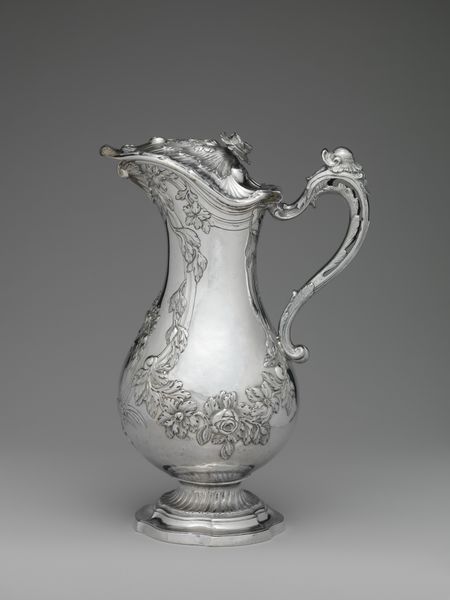
Dimensions: H. 18 7/8 in., Weight. 9.2lb. (48 cm, 4.159kg)
Copyright: Public Domain
This silver ewer was crafted by Ignatz Krautauer, likely in Germany during the 18th century. Its elegant form and intricate detailing speak volumes about the social and cultural context in which it was created. Ewers like this weren't just functional objects; they were status symbols, reflecting the wealth and refined taste of their owners. The neoclassical motifs, such as the garlands and the dolphin-shaped handle, evoke the art and culture of ancient Greece and Rome, which were highly fashionable among the European elite at the time. Objects like this were luxury items, crafted by skilled artisans for a privileged few. To truly understand this ewer, we need to look at the social and economic structures that made its production possible. Archival research into Krautauer's workshop and the patronage system of the time could reveal much about the complex relationships between artists, patrons, and the wider social world. The meaning of this ewer is contingent on this social and institutional context.
Comments
No comments
Be the first to comment and join the conversation on the ultimate creative platform.
